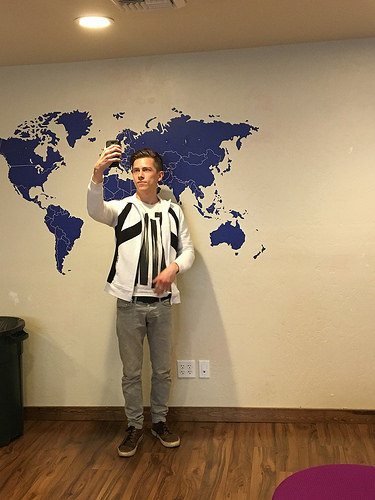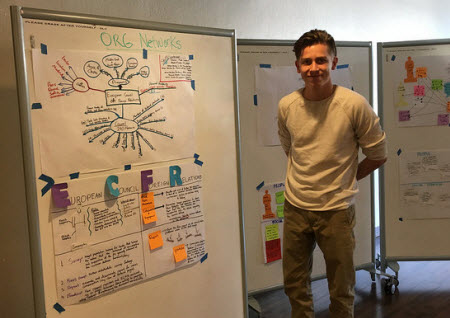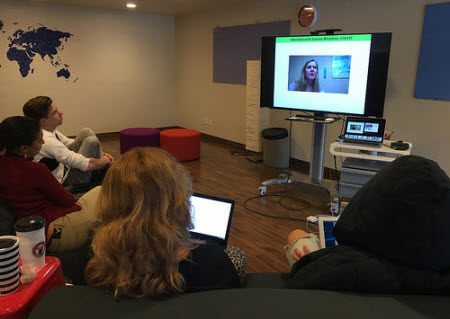
For the past five years, I’ve been an adjunct professor at Middlebury College in Monterey teaching a graduate course called “Networked International Organizations” for students pursuing an advanced degree in International Development. As part of the class, we look at different examples of networked strategies and digital platforms and tools and how they can be used to advance civil society goals. Going beyond content delivery, I also use a lot of participatory and hands-on learning techniques to help students gain a deeper understanding.
As a long-time trainer, professor, and teacher, I feel strongly that interactive learning activities – going beyond the death by Powerpoint Lecture – is the key to retention and application for participants. Your room set up can support your instructional activities that engage participants or get in the way.
I’ve spent a lot of time trying to understand how the feng shui of a classroom impacts learning. Circles without tables, just chairs helps promote group discussion. Having a large enough space so people can move around and self-organize into small groups also promotes peer learning. Classroom style with desks puts a barrier between the students and the instruction, especially when people are using laptops or tablets to take notes. If you are trying to do an interactive lecture, it stops group interaction. That’s why I always enjoy teaching in flexible classroom spaces.
In class, one of the efforts we analyzed was #SharedFuture, a campaign launched by the World Economic Forum in advance of the annual meeting at Davos to engage with world leaders. WEF encouraged people to create a selfie video for 20 seconds asking a question that a world leader would answer. Rather than just talk about the campaign, students has to participate. As part of our class, students composed a question and recorded a video related to their area of study and sent it off to Davos.
As you can see by looking at the WEF Instagram account, they recorded the answers to the questions during the meeting and have been sharing the Q/A on video here. So far, two of my students have had their questions answered. Oliver, (photographed above recording his selfie video), got a response from the Secretary General of the Economic Cooperation and Development Agency. Here’s how they combined the videos.

For each of the topics we cover in the class, students are assigned reading and I do a brief presentation of examples, frameworks and open it up for discussion. Then students complete exercises, either in small groups or solo. They have to do a network map and analysis as well as strategy for a development organization in their area of student. They also have to present their ideas to the whole class and do a brief write up.

I also invite guests to come into my class via Zoom video conference. The guests are professionals who work in International Development for large and small agencies or organizations or work for an embassy. This gives the students an opportunity to interact with professionals and learn more about how what we cover in class is applied in the real world.
Since many of the guests are from time zones that are far away, to make it convenient, I will pre-record a video interview for students. They can follow up with questions on Twitter or LinkedIn. I select guests who can answer a specific set of questions related to my lesson plan or expand on an example of a campaign or example that I share. Nothing like first-person accounts.
Designing training that is interactive, that goes beyond presenting takes upfront planning. I always create a lesson plan, a more detailed agenda, that includes topics, bullet points, timings, processes, and materials, even if I am the only one facilitating the class. I use this design checklist to identify interactive exercises.
More importantly, after every class I facilitate, I do a debrief with students as part of evaluating the training. I ask them to generate a list of keep, tweak, and delete. In addition, I write a reflection on my lesson on what I felt worked best or how to modify for the next time. This combination of advanced planning and evaluation helps one continuously improve their instructional design.
If you do training, how do you continuously improve what you are doing? And, if you are planning on attending the 2018 Nonprofit Technology Conference in New Orleans, I’ll be co-leading a session with Cindy Leonard and Jeanne Allen on creative facilitation techniques for training.
Beth Kanter is a consultant, author, influencer. virtual trainer & nonprofit innovator in digital transformation & workplace wellbeing.

Leave a Reply